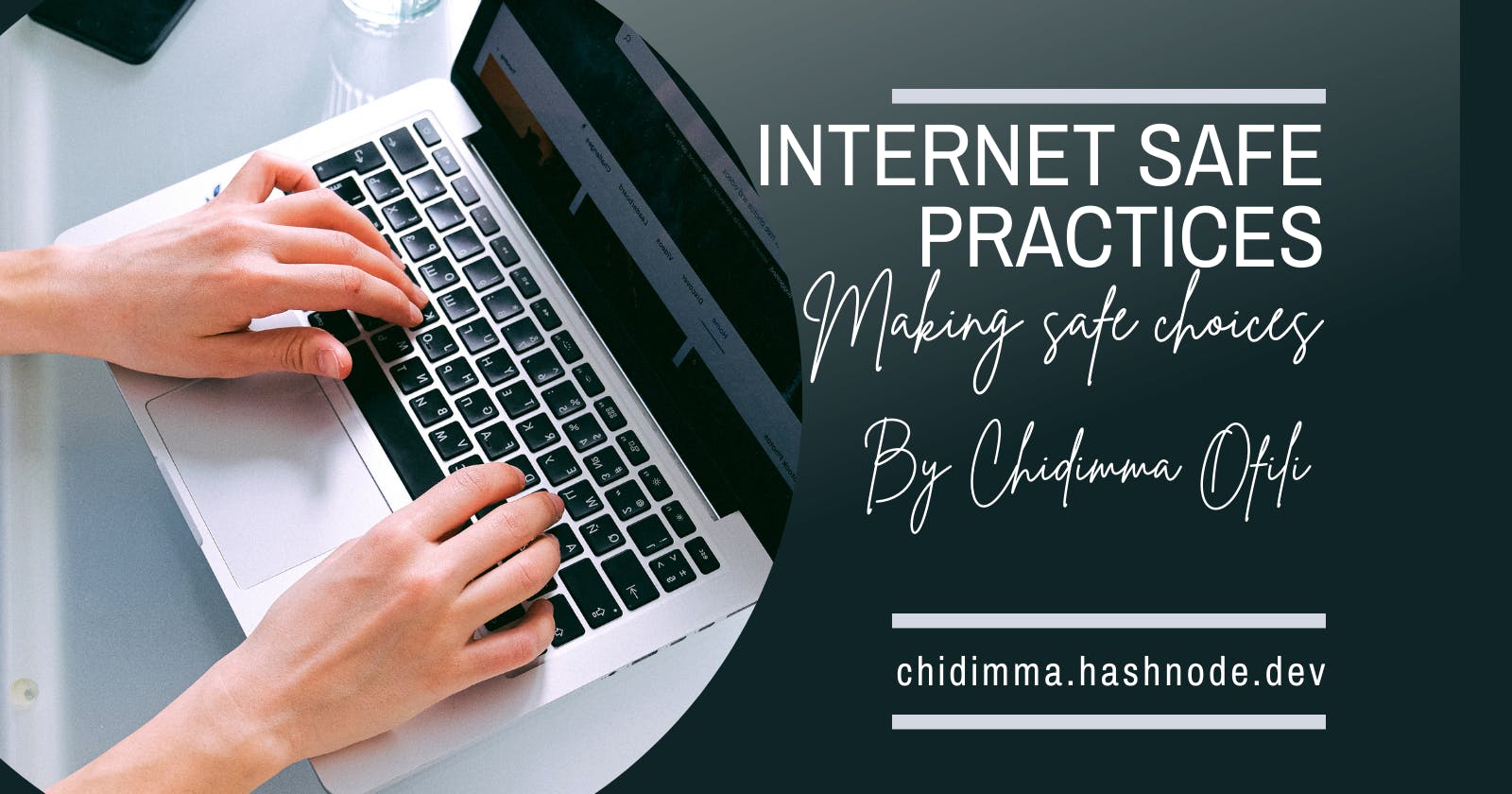WHAT IS THE INTERNET
In its simplest form, the internet can be described as a vast network of connected devices, numbering in the millions. Phone lines, fiber optic cables, coaxial cables, satellites, and wireless connections are used to connect these systems. Literally, the entire public has access to the internet.
WHAT ARE SAFE INTERNET PRACTICES
Internet safety is the practice of following sensible guidelines, understanding modern technology, and protecting your digital devices so you can shield yourself from the malicious aspects of the online world. To practice internet safety, you must have a thorough awareness of the Internet, its contents, functions, and applications. Furthermore, it emphasizes understanding lesser-known parts of the web, such as programming, webpage interactions, and secure connections. In simple terms, online security is the practice of keeping oneself safe when browsing the web.
HOW TO MAKE SAFE CHOICES!
Learning to make smart decisions is the most crucial aspect of Internet safety. These choices consist of the following;
Validating a person's identity. To show that a real person is behind the transaction or procedure, it is essential to confirm a person's identification. This confirms the existence of a real person and establishes that they are who they say they are.
Verifying the safety of a link (HTTP and HTTPS The S denotes the website's usage of secure socket layers, which is effectively an additional layer of security that shields data as it travels from a student's computer to the website's servers.) The full URL of the link's destination can be found in the lower-right corner of your browser if you hover over the link without clicking it. Check out shortened links, use a link scanner, and safely copy a link.
- Recognizing internet fraud.
- privacy protection.
- Identifying cyberbullying.
- Installing ad blockers
- By using a Virtual Personal Network (VPN), a secure connection is established between a user's device and a proxy server. Additionally, the VPN secures that connection by building a digital "shell"
INTERNET SAFETY TIPS FOR VARIOUS WEBSITES AND APPLICATIONS
- Create a strong password. Use secure passwords that contain letters, numbers, alphabetic characters, and symbols.
- The safest method for safeguarding your account is Two-Factor Authentication (2FA). On a mobile device, you can authorize access to your account using Google Authenticator, Authy, and other authenticator apps.
- Consider utilizing a VPN. Your IP address discloses who you are and where you are. Your personal information won't be connected to you if you use a Virtual Private Network (VPN) to change your IP address and appear to be in a different part of the world.
- Set your privacy and security preferences, and block any people that seem suspicious.
- NEVER download software or files from somebody you don't know or trust. Unless you're waiting for a file from someone. Don't click the file if it's not!
- DO NOT open a file marked as potentially dangerous by your browser or computer unless you are certain it is secure. Never share account details.
- Avoid using free WiFi! To check emails, only connect to secure, well-known Wi-Fi networks.
MALWARE
Any intrusive program created by cyber criminals (often referred to as "hackers") to steal data and harm or destroy computers and computer systems is referred to as malware, which is short for "malicious software." Malware types that are frequently encountered include worms, Trojan viruses spyware, adware, and ransomware.
Phishing attacks are one of the most frequent security problems that people and businesses deal with while trying to protect their data. To steal sensitive data, such as credit card numbers, passwords, and other private information, hackers employ email, social media, phone calls, and any other available communication method.
- Actions to prevent phishing attacks
Inserting a link in an email that directs you to a dangerous website and requests personal data
Installing a Trojan through a malicious email attachment or advertisement that will allow the hacker to exploit security vulnerabilities and gather vital data
Altering an email's sender address to make it seem like a reputable entity is asking for sensitive information
Calling a reputable business vendor or IT department and posing as someone else to obtain information.
HOW CAN I PROTECT MY COMPUTER AGAINST MALWARE
Your PC can be protected against malware by installing an anti-virus program and keeping it updated. A pop-up blocker can stop risky or harmful code from appearing in pop-up windows. Your system's software upgrades contain security patches that assist in preventing malware assaults by plugging any potential security gaps. You and the majority of malware are separated by this barrier. Keep it active and updated at all times.
RESOURCES FOR ANTIVIRUS
- Avast Antivirus
- 360 Total Security
- Brave Browser
- Google Chrome
- Adblock Addon for Chrome
CREDITS
Goaler_Slides carnival file from ADA Bootcamp.
